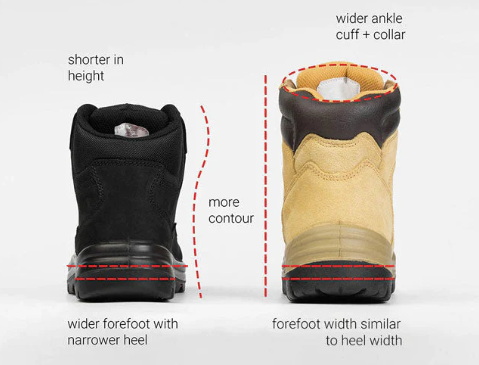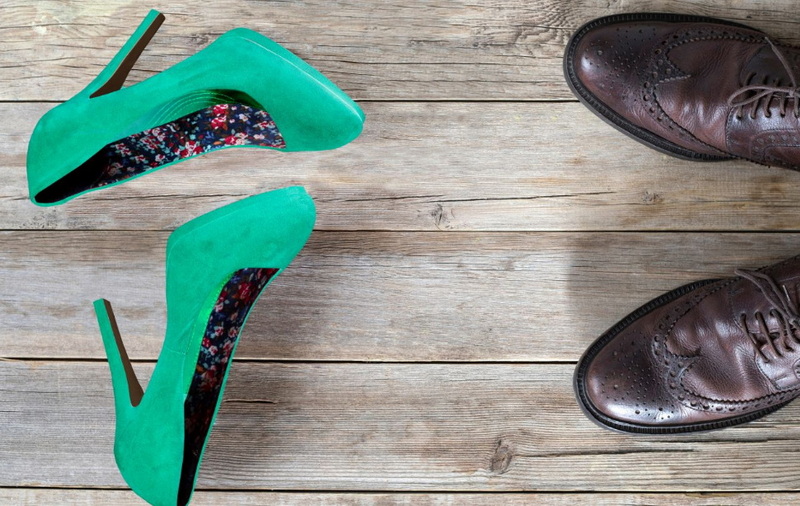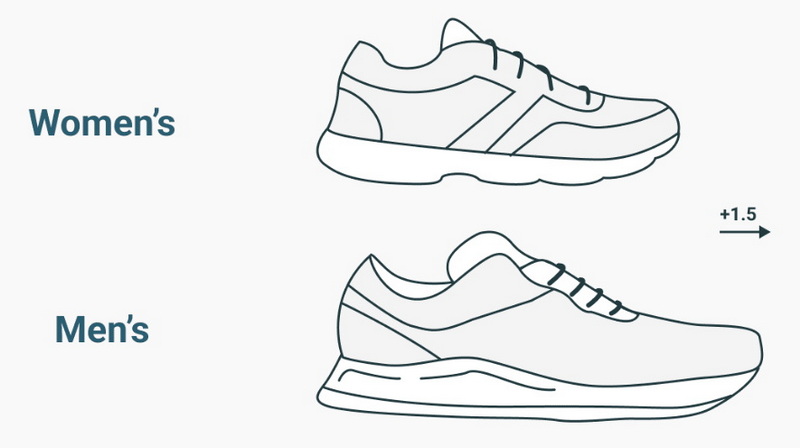Content Menu
● Introduction to Men's and Women's Shoes
● Anatomical Differences
● Shoe Design and Fit
>> Men's Shoes
>> Women's Shoes
● Materials and Weight
● Style and Appearance
● Evolution of Footwear Trends
● Impact of Technology on Footwear
● Cultural and Social Influences
● Customization and Personalization
● Sustainability in Footwear
● Conclusion
● FAQ
>> 1. What are the main anatomical differences between men's and women's feet?
>> 2. How do these anatomical differences affect shoe design?
>> 3. What materials are typically used in men's vs women's shoes?
>> 4. How have societal expectations influenced shoe design for men and women?
>> 5. What is the trend towards gender-neutral footwear?
The world of footwear is vast and diverse, with a multitude of styles, designs, and functionalities catering to different genders, preferences, and activities. When it comes to men's and women's shoes, there are several key differences that set them apart, from design and fit to materials and purpose. This article will delve into these differences, exploring the nuances of shoe design, the impact of anatomical variations, and the evolving trends in footwear.

Introduction to Men's and Women's Shoes
Men's and women's shoes have traditionally been designed with distinct characteristics, reflecting both anatomical differences and societal expectations. Men's shoes are often broader and heavier, designed to support larger feet and heavier body weights. In contrast, women's shoes are typically narrower and lighter, with a focus on style and comfort.
Anatomical Differences
One of the primary reasons for these differences is the anatomical variation between men's and women's feet. Women generally have narrower heels but wider forefeet compared to men, who tend to have broader feet overall. This anatomical difference influences the design of the shoe, with women's shoes often featuring a snugger heel and a roomier toe box to accommodate the wider forefoot.
Shoe Design and Fit
Men's Shoes
Men's shoes are designed to be more robust and supportive, catering to the generally larger and heavier male foot. They often feature thicker, more durable materials to handle greater impact forces, making them suitable for high-impact activities like running or hiking. Men's shoes also tend to have a more straightforward design, focusing on practicality and durability rather than fashion.
Example: Men's Running Shoes
Men's running shoes are built with denser midsoles to absorb the shock from heavier body weights, ensuring better support and cushioning during runs. Additionally, men's shoes often have a more substantial sole to provide stability and traction on various terrains.
Women's Shoes
Women's shoes, on the other hand, are crafted with lighter materials and often include extra padding in the arch area to support higher arches. They are designed to be more flexible and comfortable, accommodating the narrower heel and wider forefoot typical of women's feet. Women's shoes also prioritize style, with a wide range of colors and designs available.
Example: Women's Running Shoes
Women's running shoes have softer midsoles to accommodate lower body weights and provide easier flexibility during runs. Moreover, women's shoes often feature a more streamlined design, which enhances their aesthetic appeal.
Materials and Weight
The choice of materials in men's and women's shoes reflects the differences in body weight and activity levels. Men's shoes use thicker, more durable materials to support heavier body weights, while women's shoes are made with lighter, more flexible materials for comfort and ease of movement.

Style and Appearance
Men's shoes tend to be more conservative and practical, often featuring neutral colors like black, gray, or navy. Women's shoes, however, offer a broader palette of colors and styles, including high heels, pointy toes, and decorative elements.
Comparison of Men's and Women's Shoe Styles
| Men's Shoes | Women's Shoes |
| Practical, neutral colors | Stylish, varied colors |
| Broader, heavier designs | Narrower, lighter designs |
Evolution of Footwear Trends
In recent years, there has been a shift towards gender-neutral footwear, challenging traditional gender norms and offering more inclusive options for consumers. This trend emphasizes comfort and functionality over gender-specific designs, allowing individuals to choose shoes based on personal preference rather than gender.
Impact of Technology on Footwear
Advancements in technology have significantly impacted the design and production of both men's and women's shoes. Modern materials and manufacturing techniques allow for shoes that are not only more comfortable and durable but also environmentally friendly. For instance, eco-friendly materials like recycled rubber and plant-based leather are becoming increasingly popular.
Cultural and Social Influences
Cultural and social factors also play a significant role in shaping footwear trends. For example, high heels have historically been associated with women's fashion, while loafers and boots are more commonly linked to men's attire. However, with the rise of gender-neutral fashion, these boundaries are becoming more fluid.
Customization and Personalization
The ability to customize shoes has become a significant trend in the footwear industry. Both men and women can now choose from a variety of colors, materials, and designs to create shoes that reflect their personal style. This trend is particularly popular among sneaker enthusiasts, who can personalize their shoes with unique color combinations and designs.
Sustainability in Footwear
As consumers become more environmentally conscious, the demand for sustainable footwear has increased. Both men's and women's shoes are now being designed with eco-friendly materials and production methods, reducing waste and minimizing environmental impact. Brands are incorporating recycled materials, biodegradable components, and energy-efficient manufacturing processes into their designs.
Conclusion
In conclusion, the differences between men's and women's shoes are multifaceted, reflecting anatomical variations, societal expectations, and evolving trends in footwear. While men's shoes are generally broader and heavier, women's shoes are narrower and lighter, with a focus on style and comfort. As the industry moves towards more inclusive and gender-neutral designs, consumers have a wider range of options to choose from, allowing them to prioritize both style and functionality.

FAQ
Here are some frequently asked questions about the differences between men's and women's shoes:
1. What are the main anatomical differences between men's and women's feet?
- Women generally have narrower heels but wider forefeet compared to men, who tend to have broader feet overall.
2. How do these anatomical differences affect shoe design?
- Women's shoes often feature a snugger heel and a roomier toe box to accommodate the wider forefoot, while men's shoes are broader and more supportive.
3. What materials are typically used in men's vs women's shoes?
- Men's shoes use thicker, more durable materials to handle heavier body weights, while women's shoes are made with lighter, more flexible materials.
4. How have societal expectations influenced shoe design for men and women?
- Men's shoes have traditionally been more practical and durable, while women's shoes have prioritized style and fashion.
5. What is the trend towards gender-neutral footwear?
- Gender-neutral footwear emphasizes comfort and functionality over traditional gender norms, offering more inclusive options for consumers.

















